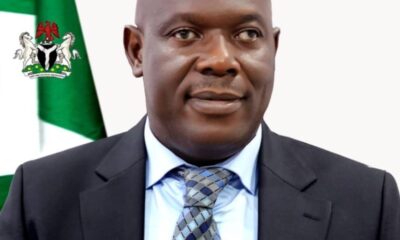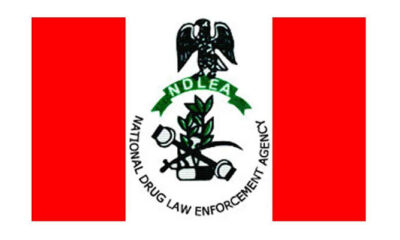Opinion
Dimensions To Nigeria’s Food Crisis
Going by statements credited to Nigeria’s Vice President, Senator Kashim Shettima, that “some people are working to undermine the efforts of the President Bola Tinubu administration”, especially with regard to the rapidly rising costs of food items across the country, one begins to worry if the trend of economic difficulties that began since 2015, will ever be reversed, or at least be halted. 2015 was the year the All Progressives Congress party took over governance in Nigeria, led by former President Muhammadu Buhari.According to national media reports, Vice President Shettima had used the opportunity at a conference on Public Wealth Management which held in Abuja, to reveal the discovery of “32 illegal routes,” in Illela Local Government Area (LGA) of Sokoto state, through which smugglers freight commodities out of the country. The VP also disclosed that “45 trucks loaded with maize were intercepted while making their way to neighbouring countries at midnight on Sunday.”
While the discovery of 32 smuggling routes in one Local Government Area, (LGA) of Sokoto state alone is startling, it is disheartening to realise that the state has five other border LGAs where similar things happen – Gudu, Tangaza, Gada, Sabon Birni and Isa – and worse still, considering that apart from Sokoto, states like Kebbi, Zamfara, Katsina, Jigawa, Yobe and Borno all lie along Nigeria’s porous 1,608km border with Niger. The interception of 45 trucks in just a night in one LGA, makes unimaginable the enormity of the number of truckloads of food items leaving this country daily.The unpatriotic priority of supplying Niger Republic, even at the risk of smuggling across terrorist-infested borders, against pressing domestic demands, is another reason for concern, and puts to scrutiny the efficiency and patriotism of our border control personnel towards implementing extant government policies. How long has this been going on, or was it a recent development?
Or was it the result of calculated distraction from political antagonists to frustrate the present administration, as the VP tried to paint it? His picture looks appealing when correlated with the recent spike in the price of cement, especially. But how come it was the vice president who stole the show of making the revelation public, instead of the intercepting agencies? It is expected that the federal agencies whose duty it is to secure borders should have been proud to parade and announce such achievements to showcase the essence of their establishment. And from Mr Vice President, who went short of naming the culprits, but rather alluded to “knowing the consequences of revealing the masquerade”, many would have preferred he damned those consequences by revealing particulars, otherwise many are tempted to perceive him as merely propagandising facts in the face of a national crisis.
However, while pondering the above worries, it would be worthwhile to review the changing political and economic landscapes inside and outside Nigeria since 2015, to find out factors that might have been at play. Hitherto, Nigeria had enjoyed free, cross-border movements of goods and persons with Cameroon, Chad and with its Economic Community of West African States (ECOWAS) neighbours up until May 2015, when President Muhammadu Buhari came to power. These movements supported transverse trades up to Mali, Burkina Faso, Central African Republic and as far as Lybia. By July of 2015 the Buhari’s administration, poised to enforce home-grown production, had imposed cross-border restrictions, a situation that became more stringent following the COVID-19 pandemic lock-downs of 2020.
On the other hand, nationalist uprising in eastern Cameroon from 2016 culminated to the 2019 Ambazonian separatist movement that ever since, pitched the ‘amba boys’ in gorilla warfare with Cameroonian authorities. Buhari’s government corresponded with Cameroon to tighten border restrictions on both sides. For every step of restriction, commodity prices responded in increase, both in Nigeria and across the borders, increasing the inducement for smuggling, no thanks to porous borders and the usual “pay and pass” atmosphere. Border bribes get higher with restrictions, reflecting on costs as goods flow across. Nigeria, being a huge source of farm products, and for a long time a source of subsidised petroleum products, fed scarcities that intensified many miles off its borders. Accompanying and aiding smuggling was heightened islamists influx into Nigeria from the Sahel.
Greater numbers of maraudering Islamist gangs from Mali, Niger, Chad and the Central African Republic, acting either criminally on their own, or on brotherhood solidarities in the ethno-religious, farmers-herders or political conflicts in Nigeria, attack and plunder agricultural settlements. It has degenerated to current general insecurity, spate of kidnappings, and rapidly rising food prices. The spread of inflation across border was aided by the coup of August 18, 2020 in Mali, to which ECOWAS responded with economic sanctions. Mali with no direct border with Nigeria, has short connections through south-western Niger Republic. The overall game changer dawned since February 24, 2022 with Russia’s invasion of Ukraine, followed by October last year’s out-break of Israel vs Hamas war in the Middle East. Ever since, global supply chains of grains, energy and raw materials have remained disrupted, shooting up everything from transportation costs to the value of foreign currencies.
Subsidy removal shocks on Nigeria’s poor transportation infrastructure, a sector daily threatened by insecurity, meant it was becoming more expensive to businesses in the north, compared to shorter cross-border routes which, in addition present prospects of higher gains. This becomes more obvious considering that the distance from Gboko in Benue to Bamenda in Cameroon is 443.7 Km, while from same Gboko to Lagos it is 795.9 Km, and 538.5 Km to Port Harcourt. Yola in Adamawa to Touruo in Cameroon is 229.5 Km, but it is 879.1 Km to Calabar and a staggering 1,327.4 Km to Lagos. Meanwhile, Illela in Sokoto can be crossed on bike or donkey into Birnin Konni, 5Km into Niger Republic, while the distance from Kano to Maradi in Niger is 268.2 Km, Kano to Abuja, 432 Km, and 992.2 Km to Lagos. Birnin Kebbi in Nigeria is 395.6 Km to Niger’s capital, Niamey, while being 658.4 Km off Nigeria’s, Abuja. In fact, smugglers utilise shorter segments, like in case of Illela to Konni, for higher round-trips.
According to reports, the amount of cross-border trades currently going-on across the Niger border is to the tune of N13 billion weekly, on items ranging from kusus, local flour, onions, tomatoes, pepper, potatoes, millet, maize, rice, jewelries to livestock, from which Nigeria losses revenues. The juntas in Niamey and Bamako, for all their militantness and recent pull-out from ECOWAS, let the illicit trades thrive. All these put together, it is easy to figure out the underlying factors to Nigeria’s economic woes, and to relate patterns with insecurity – Nigeria’s very porous borders have become more attractive in the face of rising haulage costs, as much as agro-production outputs are declining due to insecurity.The situation therefore calls for drastic measures to curb insecurity, transportation costs and smuggling, while massively investing in production. Even if it takes the tactics of ancient cities whose domains had to be walled-off with fortifications to achieve internal control and protection.
Yes, the flux across Nigeria’s 1,608 Km porous border with Niger Republic can, and should be checked with perimeter fortifications punctuated with approved access stations, and manned with surveillance technologies. Nigeria should also do same along its 809 Km border with Benin Republic and the 1,975 Km with Cameroon. With security concerns now gulping over N3.2 trillion in the 2024 national budget, a trillion Naira out of that bulk would fortify more than one flank of the borders to give our security personnel, beset by attack-and-withdrawal terrorists, a better chance at ending insecurity, and the border agencies, no excuses in discharging duties.
Joseph Nwankwo
Opinion
Ndifon’s Verdict and University Power Reform

Opinion
As Nigeria’s Insecurity Rings Alarm

Opinion
The Girl Who Didn’t Dance
-

 Featured2 days ago
Featured2 days agoOil & Gas: Rivers Remains The Best Investment Destination – Fubara
-

 Nation2 days ago
Nation2 days agoOgoni Power Project: HYPREP Moves To Boost Capacity Of Personnel
-
Nation2 days ago
Hausa Community Lauds Council Boss Over Free Medical Outreach
-
Nation2 days ago
Association Hails Rivers LG Chairmen, Urges Expansion Of Dev Projects
-
Nation2 days ago
Film Festival: Don, Others Urge Govt To Partner RIFF
-
Nation2 days ago
MOSIEND Calls For RSG, NDDC, Stakeholders’ Intervention In Obolo Nation
-

 News2 days ago
News2 days agoNDLEA Arrests Two, Intercepts Illicit Drugs Packaged As Christmas Cookies
-
Rivers2 days ago
UNIPORT Moves To Tackle Insecurity … Inducts Security Experts

